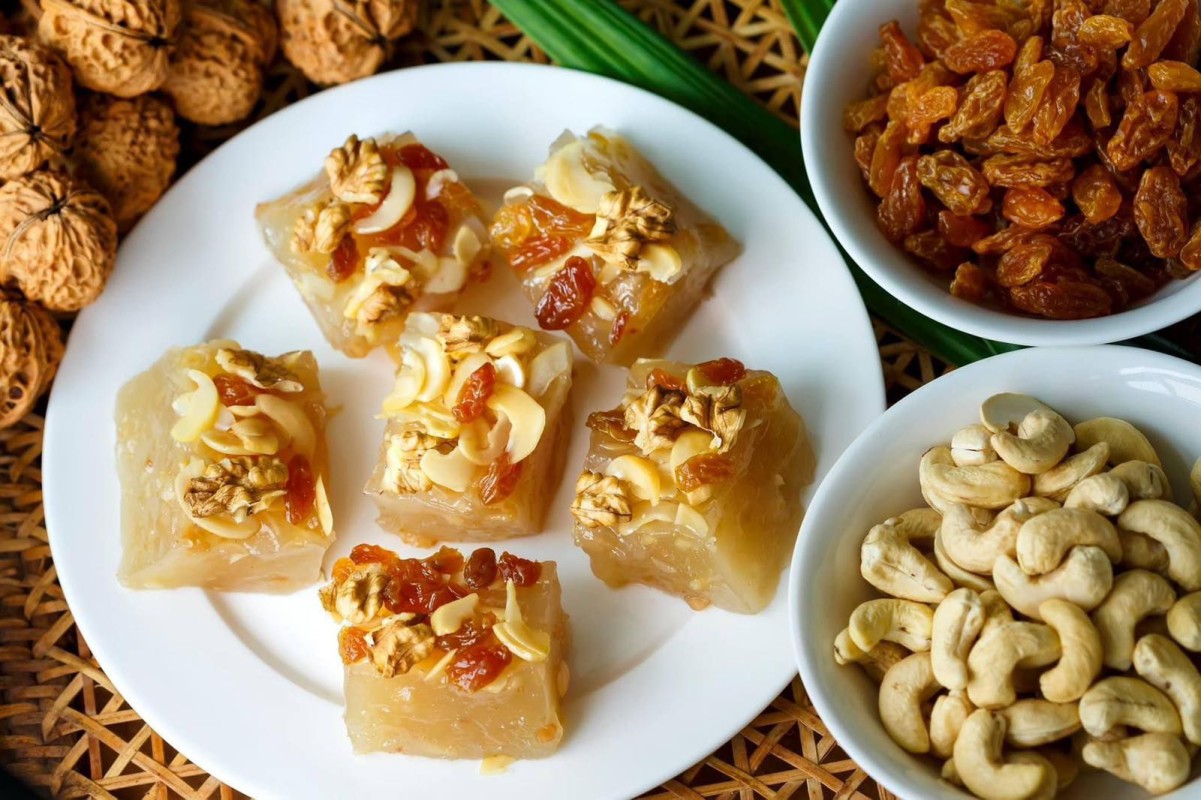Sweet delights: A journey through Myanmar's traditional desserts

555

Thiri Khit Oo (NP News) - Oct 13
Nestled between lush mountains and golden pagodas in the heart of Southeast Asia, Myanmar is a country rich in history, culture, and culinary traditions. Its diverse ethnic groups, influenced by neighboring China, India, and Thailand, have created a vibrant cuisine. While the savory dishes of Myanmar are celebrated, the true hidden gems are its traditional desserts, often enjoyed after a hearty meal.
These desserts offer more than just a delicious way to end a meal; they are a window into the country's soul, carrying stories of ancient traditions, family recipes, and seasonal harvests. Each sweet treat is a celebration of simple, natural ingredients, skillfully transformed into something extraordinary. Let's explore some of Myanmar's most beloved post-meal desserts and their cultural significance.
1.Mont Lone Yay Paw (Glutinous Rice Ball): A symbol of unity and celebration
One of Myanmar's most renowned traditional desserts, it is a delightful treat consisting of glutinous rice flour balls filled with sweet jaggery (palm sugar). These balls are boiled until they float to the surface, symbolizing good luck and fortune. The name "Mont Lone Yay Paw" literally means "floating on water."
A staple during the Myanmar New Year Water festival, Thingyan, Mont Lone Yay Paw is prepared in large quantities by families and communities. The communal preparation, involving family members gathering to mold the rice dough and insert jaggery, fosters laughter and togetherness. After a meal, this sweet dessert serves as the perfect communal ending, reminding everyone of the bonds that food creates within families and communities. Mont Lone Yay Paw is a popular treat during Myanmar’s New Year Water festival, Thingyan.
2. Mont Let Saung (Coconut and Rice Dessert)
Another dessert featuring coconut milk and rice, Mont Let Saung uses glutinous rice balls or small strips of rice noodles served with sweet coconut milk and sometimes jaggery syrup. Popular during the Thingyan festival, Mont Let Saung offers a delightful combination of chewy and creamy textures. The sweetness of the syrup complements the richness of the coconut, creating a truly satisfying dessert.
3. Sanwin Makin (Burmese Semolina Cake)
A dense and rich dessert, Sanwin Makin is made with semolina, coconut milk, butter, and sugar. Baked until golden brown and topped with sesame seeds, this sweet, moist cake has a texture similar to a traditional cake. Popular at parties and special occasions, Sanwin Makin is a decadent treat.
4. Htoe Mont (Burmese Sticky Cake)
Htoe Mont is a sticky, dense cake made with glutinous rice flour, coconut milk, raisins, and sometimes nuts. Often cut into squares, it is enjoyed during festive occasions. With its sticky, chewy texture and sweet flavor profile, Htoe Mont is a delicious and satisfying treat.
5. Mont Kalame (Layered Cake)
Mont Kalame is a layered, steamed cake made with rice flour and coconut milk. Sometimes, coloring is added to create a vibrant appearance. The layers are firm, slightly chewy, and mildly sweet, making for a delightful dessert.
Beyond the taste, Myanmar's traditional desserts are a beautiful reflection of the country's heritage, blending flavors, culture, and communal spirit into each dish. From the chewy sweetness of Mont Lone Yay Paw to the creamy richness of Mont Let Saung and the decadent texture of Htoe Mont, every dessert tells a story of family, unity, and shared joy.
After a fulfilling meal, Myanmar's desserts offer not only a sweet finish but also an opportunity to connect with centuries-old traditions. The next time you dine in Myanmar or at a Myanmar restaurant, don't rush to finish your meal—save room for dessert. Each bite will not only tantalize your taste buds but will also transport you to the heart of this beautiful country, where food is a celebration of life and community.